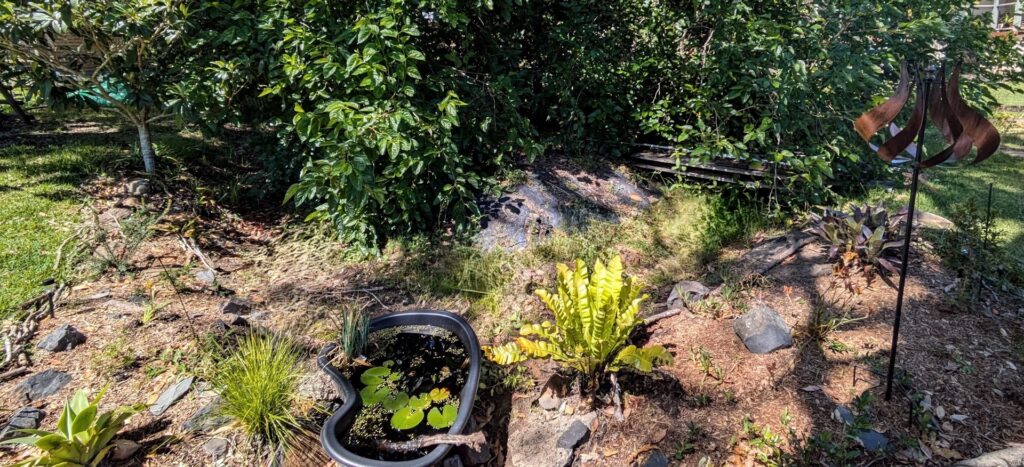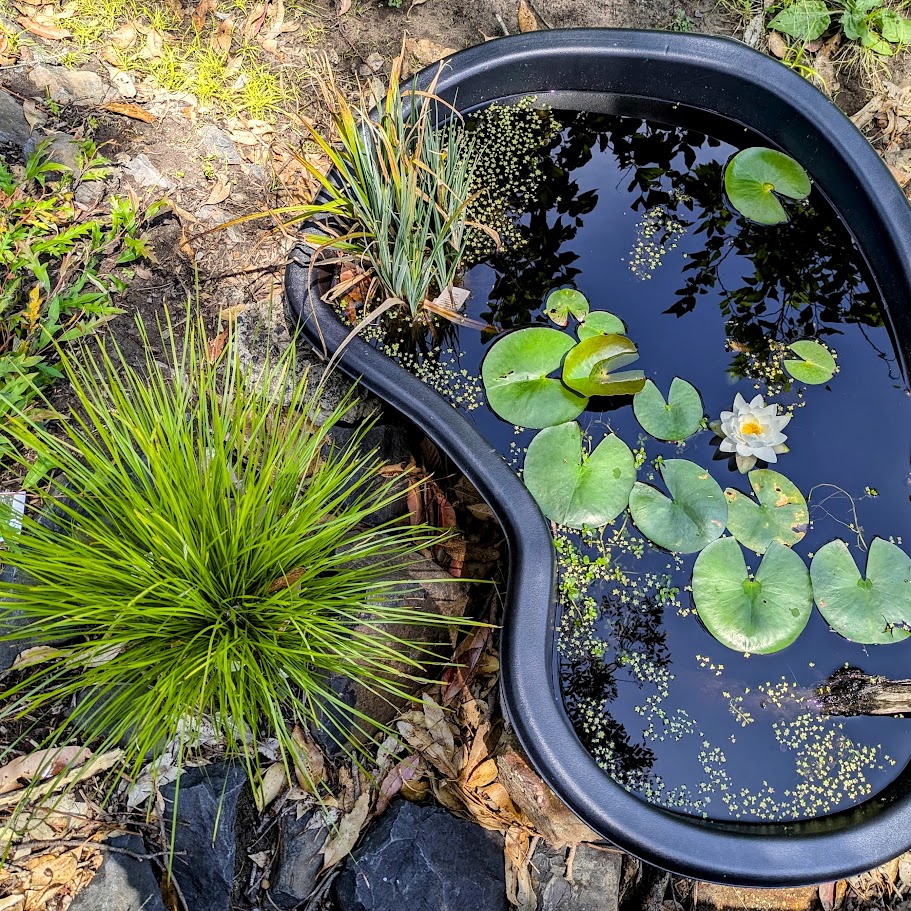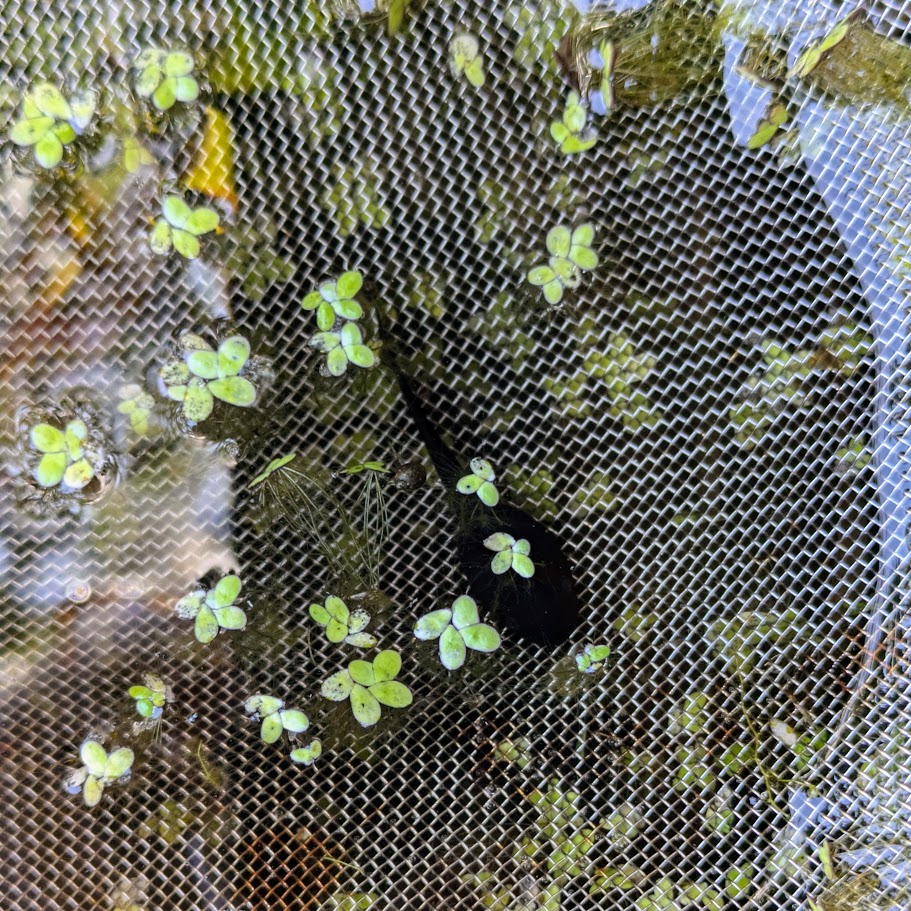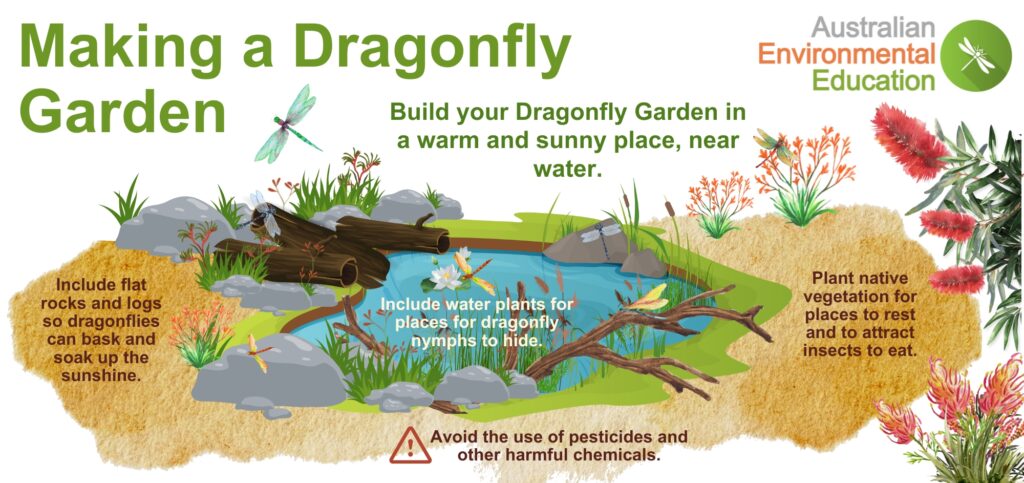Transforming a garden into a thriving wildlife sanctuary is a rewarding and impactful way to support local biodiversity and connect with nature. I have had a great time working on the garden and creating a space that is relaxing for me and haven for local wildlife.

My goal was clear: design a garden that would support native flora and fauna while creating an inviting natural oasis. Native plants were chosen for their resilience and compatibility with local species, while a dragonfly garden with a water feature was included to attract dragonflies, damselflies, and frogs. By providing a habitat with food, shelter, and water, the garden aimed to draw in various species and give them a safe place to thrive. I now have a Water Dragon that lives nearby, tadpoles, damselfly and dragonfly nymphs living in the pond.


I started the process of The transformation was almost immediate. With the native plants taking root, insects and small animals quickly followed. The pond became a lively centre of activity, home to dragonflies, damselflies, and tadpoles. Stripe marsh frogs and common eastern froglets were soon heard calling, marking the garden as a hotspot for native frogs.
Key Elements of the Wildlife Garden
- Native Plants and Vegetation: Carefully selected native plants formed the backbone of the garden. Hardy shrubs, grasses, and flowering plants created a layered structure that mimicked local bushland. These plants provide food and shelter for insects, birds, and small mammals while requiring minimal maintenance.
- Dragonfly Garden and Pond: The heart of the project was a small pond, ideal for attracting dragonflies, damselflies, and native frogs. Shallow and shaded at the edges but deeper in the centre, the pond was lined with rocks and aquatic plants that offered ideal spawning grounds for tadpoles and larvae, adding biodiversity to the garden ecosystem.
- Log and Rock Piles: Strategic log and rock piles added structure to the garden, offering hiding spots for reptiles, insects, and small mammals. These features also help to retain moisture, creating a microhabitat that attracts invertebrates, which in turn attract other wildlife up the food chain.
During the night I hear the unmistakable calls of the Powerful Owl and Southern Boobook Owl echoed through the garden, suggesting that even these top predators were taking note of the new ecosystem. The presence of these owls, which rely on small mammals and other prey, indicated that the garden was supporting a complex food web.

The increase in insect life attracted various bird species, enriching the biodiversity and adding another layer to the garden’s ecosystem.
Creating a successful wildlife garden is not only about design but also about patience and careful observation.
This wildlife garden is a testament to the impact of intentional, eco-friendly gardening, proving that even small spaces can support diverse and thriving ecosystems. For anyone inspired to start their own wildlife garden, this success story offers a roadmap and motivation to begin. By embracing native plants and creating a few key habitats, any garden can become a sanctuary for local wildlife, benefiting both the environment and the community.

